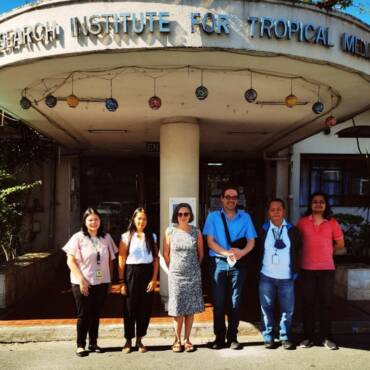Leptospirosis is one disease affecting both animals and humans. Its transmission dynamics and main drivers needs better understanding. Veterinary and public health sectors should ensure an effective partnerships for detection of circulating serovars and to better understand links between human and animal contamination.
The meeting brought together ECOMORE team from NIHE, key persons of the Bacteriology Department at NIHE and Mrs. Nguyen Thi Kim Oanh – Deputy Director and Nguyen Khanh Ly – Head of Serology Laboratory at the National Centre of Veterinary Diagnostics (NCVD).


The objective was to finalize operational processes to conduct the study on contamination of animals in the framework of the case-control study to determine the risk factors for Leptospirosis.
The NCVD will contract district veterinarians to collect the samples; it is planned to collect a total of 1,200 specimens, 400 for each group, dog, swine, and cattle. Participants showed some concern for collecting blood samples in dogs which are often free in the villages and not used to be handled. The vaccination of veterinarians against rabies will be recommended.
NIHE and NCVD will closely collaborate to design the questionnaire aiming at assessing Leptospirosis signs in animals and possible routes of contamination between Humans and animals. Sample confirmed positive will sent to IPNC for sequencing to determine possible links between human and animal serovars.
The blood samples will be shipped to the NCVD where Micro-Agglutination-Technique (MAT) will be performed to confirm diagnosis of Leptospirosis and to predict infecting serovar.
MAT is performed by incubating patient serum with various serovars of leptospires. So performing MAT requires maintaining of live panel of leptospires representing the circulating serovars from the area studied.
NIHE already collaborate with Institut Pasteur in New Caledonia to refresh 22 isolates and will exchange live Leptospires with NCVD to standardize their panel of serovars for this study.
Later NCVD will be involved in the statistical analysis of data collected during the case control study to assess:
- What are the drivers of sero-variants distribution and diversity in specific environments?
- Which ones have more zoonotic or human infection potential or importance?
- Could interventions to reduce leptospirosis in animals, such as livestock vaccination, have a positive impact on the incidence of human leptospirosis?



Add Comment